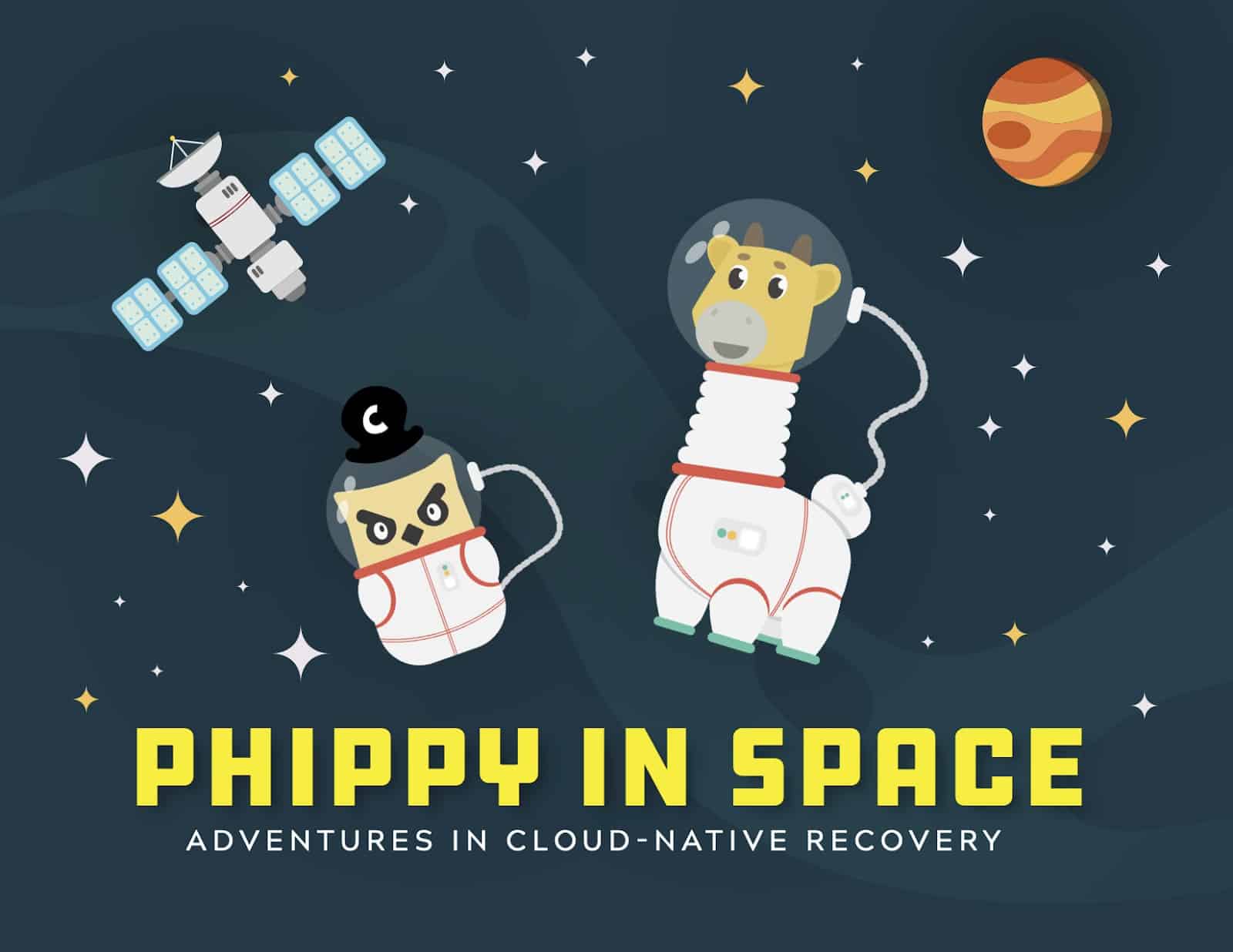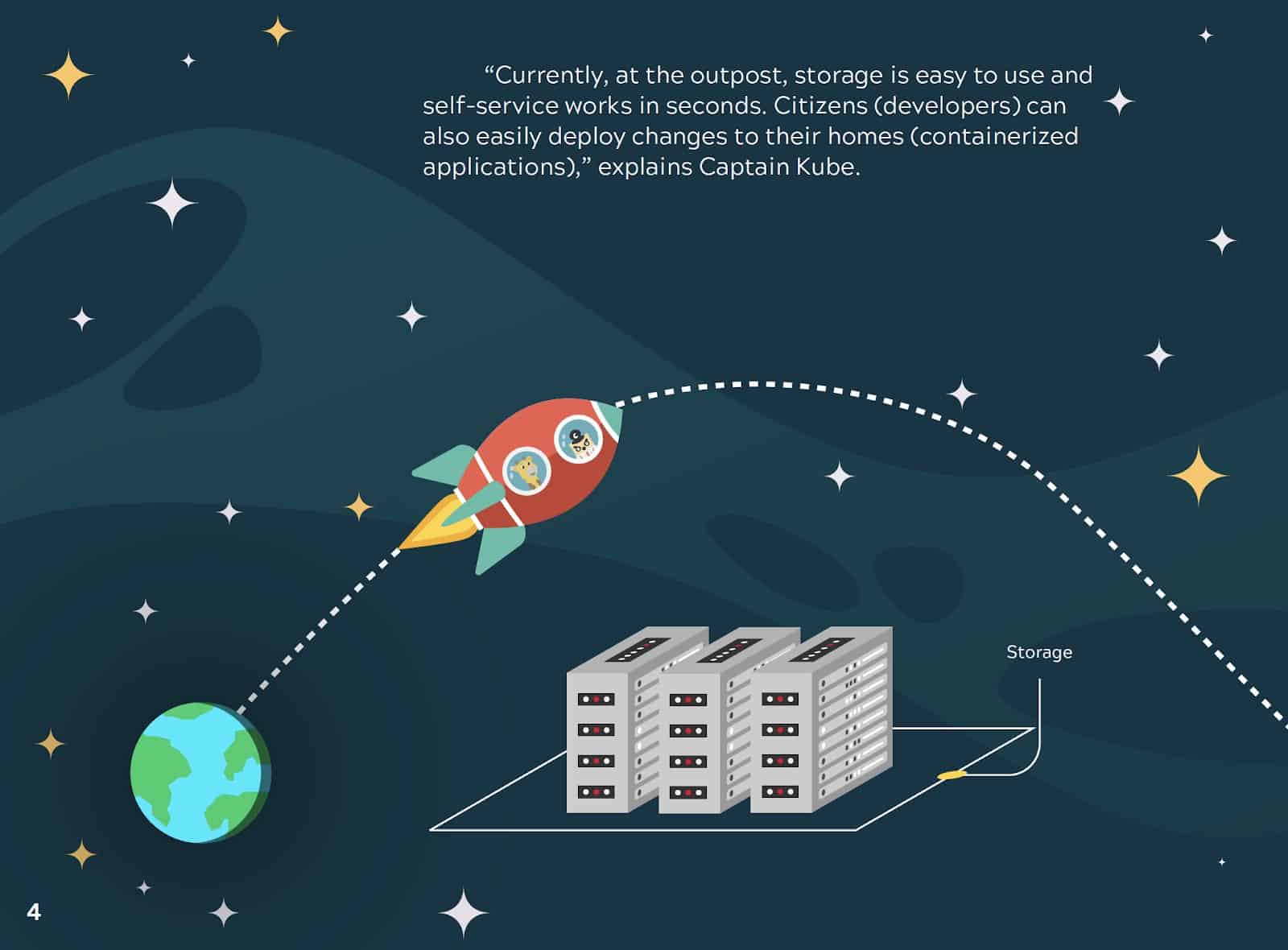Adventures in Cloud-Native Recovery
Guest post by Citlali Tolia and Yuiza Martinez-Rivera of Kasten

When Kasten, a growing startup in the Kubernetes data management space, was looking for a fun way to educate newcomers to the quickly expanding cloud-native ecosystem on some of the more important challenges they’re facing, they reached out to see if we–Yuiza Martinez-Rivera and Citlali Tolia–would be interested in collaborating on a Phippy book to be launched at KubeCon 2020.
Yuiza is a Philosophy Ph.D. candidate and artist with a background in Architectural Design and broad experience in graphic design for the tech industry. She is particularly interested in the representation of processes and the simplification of information. I am Citlali Tolia, an editor and translator with an ABD in Latin American Literature and Cultural Studies, with experience in children’s publishing and Ed Tech.
As sisters raised together across three countries and having talked about collaborating on a children’s book for a long time, we jumped at the opportunity to work together on the next Phippy adventure. Our joint history afforded us a common ground that made the process particularly fun, easy, and dynamic, adding a level of trust in each other’s judgements and common pool of references. There was a lot of laughter in the making of Phippy In Space.
It’s easy to see why the Kasten team thought of using Phippy to help tell their technical story, since the original titles have broad appeal for both in-the-know adults and animal-loving children (my own kids play regularly with the character plushie set). And being written as a “children’s” book provides the additional advantage of forcing writers to break down complex concepts and processes, making these topics more accessible for new audiences.
Building the Story
To start off, we needed a setting for our story. How to frame the issues cloud-native storage is facing? Our original idea was that Captain Kube and Phippy were in charge of the development of a new city, since it seemed analogous to the kind of work that is happening in the cloud ecosystem. And while we thought it was a solid idea, we were hoping for more pizzazz. So, when Kasten told us “sky’s the limit” to what we could do, we took that literally. Phippy and Captain Kube packed their bags and started practicing their moonwalk.

We decided that the story was going to take place on the journey from Earth to Mars, as a dialogue between Captain Kube and Phippy, in which they discuss challenges and come up with solutions as they approach Mars. We wanted their arrival in Mars to be the end of the story and the start of the implementation phase of their solutions, to reflect the role of the book as an educational tool. Once our story ends, it’s on the readers to take action to find solution-providers and start getting ready for the new cloud-solutions day.
Crafting the details of the story was a true collaborative process, requiring close work with subject-matter experts. First was figuring out the biggest challenges cloud storage, backup providers, and users are facing; and then organizing them logically and finding ways to draw analogies on our fictional Mars Outpost. Along the way we had to decide what characters would join Phippy along for the fun. We wanted to keep things simple to reduce confusion, which meant keeping the character list short. Robot Ruby, the backup robot, made her debut as we sought for ways to illustrate processes. She became the representative of a new, flexible, dependable way of doing things.
Creating the Art
Once we were set on a space adventure, we debated inspiration and the general feel we wanted. We both quickly agreed on a retro-futuristic aesthetic, looking at old stills of The Jetsons. David Bowie and Flight of the Conchords were our soundtrack. Our version of space is one of wonder and optimism (albeit obviously a prepared space that can handle the occasional space accident or space monster attack).

Yuiza started by sketching ideas for characters in their space suits (Goldie was particularly fun to stick into a space suit!), the spaceship, and then the outpost itself. We wanted to keep the characters true to their original look and opted for an overall simple and clean aesthetic, with soft corners and kid-friendly looking characters. Structures likewise would be rounded and minimalist.


Once the characters, structures and visual themes were set, it was time to start laying out the spreads. At this point, the story and art moved almost simultaneously, with a tight feedback loop between the technical team and the writing/creative team. As Yuiza brought the Mars Outpost to life, we discussed layouts and the limitations of our chosen medium to gain more clarity on how to break down the information and what additional explanations were needed.

For some spreads, like p10-11, when Phippy is discussing backup policy requirements, we had live collaborations with the technical team to ensure that the illustration conveyed the problem accurately. This way of working gave the technical team an opportunity to participate actively in the process, and for us, the creative team, the chance to learn more about the complexities of cloud storage and backup.
We are thrilled about the reception Phippy in Space received and can’t wait to see what other adventures await Phippy and crew.
The book is listed on the CNCF Phippy and Friends page and can be downloaded from GitHub: https://kastenhq.github.io/Phippy-In-Space/